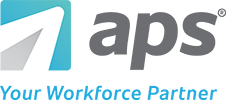6 Things To Consider When Choosing A Payroll Provider
Are you considering converting to a new payroll provider, but hesitant to make a change? You may be concerned about missing payroll periods or data errors during the transition, but it doesn’t have to be chaotic.
The key to a successful payroll conversion is a streamlined conversion process that meets the unique needs of your company while minimizing the amount of work required to get started. When you’re ready to make the switch, here are six things to consider when choosing a payroll provider.
#1. Timing of a Payroll Conversion
Deciding when to implement a new payroll solution is important. If you are considering a mid-year conversion, Quarter 2 is a good time to start the process. Another option is to convert at the end of the year. The ideal time to begin a year-end conversion is October so it doesn’t conflict with any year-end processing you need to handle.
No matter which time of year you choose, a streamlined implementation process will ensure a smooth transition. Part of this process is working with an experienced and knowledgeable sales consultant who understands your needs and requirements to recommend the best solution. Given the complexity of workforce solutions and the multitude of capabilities that will impact your company, a good payroll provider should have a sales team that is involved every step of the way.
2. Data Conversion
When considering a conversion, it’s important to also look at whether the payroll system is unified with core HR and attendance. When payroll, core HR, and time tracking data are stored in a centralized database, this provides many benefits, including:
- Greater user flexibility
- Reduced payroll errors
- Eliminated duplicate data entry
- Decreased labor costs
- Increased visibility into company trends and metrics
Look for a provider who assigns a dedicated implementation manager with the experience to translate the differences in the systems and suggest improvements that will increase productivity, reduce the potential for errors, and drive down costs.
Whether your company has employee garnishments, non-cash fringe benefits, or complex vacation policies, you want to look for a solution that will meet your unique requirements and scale to your company’s structure.
3. Data Integration Capabilities
Many companies have existing business investments for benefits, such as general ledger software, point-of-sale (POS) systems, and retirement packages. The ability to integrate these existing systems with an online payroll system is a huge benefit as all of the data is accurate and up-to-date. Other benefits include:
- Eliminated duplicate data entry
- Reduced paperwork
- Point-in-time reporting
Consider providers that have an established portfolio of integrations with the most popular business applications and vendors. Providers who own and develop their own technology have the flexibility to develop their own data integrations so you have a tailored solution.
TIP:
4. Payroll Tax Compliance Management
With payroll tax compliance rules constantly changing, it’s crucial to utilize a payroll provider with a tax compliance department that will help manage these updates. Once conversion is complete, a tax compliance team should update your payroll tax tables each year, and help with year-end processing.
A good payroll provider should have a tax compliance team that consists of experts who will review your existing data to check for any potential payroll tax errors. The tax compliance team should also update payroll tax tables each year, handle tax filings and payments, and help you with year-end processing.
TIP:
5. Data Conversion
One of the most important steps of the conversion process is migrating company data out of your old system and into the new system accurately. To ensure your data will be accurate, make sure the following tasks are performed:
- Data Conversion: Year-to-date history is entered into the new payroll solution.
- Payroll Assessment: A payroll compliance assessment is performed to reconcile data history.
- Validate Accuracy: Parallel, or side-by-side payrolls are run prior to the first live payroll submission to confirm data and tax settings are correct.
Look for providers who assign you an implementation point of contact who will handle your data conversion process. They should perform all of the above tasks in addition to importing payroll and employee data from previous years.
6. Customer Support
Another equally important factor to consider during a payroll conversion is the level of customer support provided. You should feel confident in knowing that a customer support member is readily available to ensure a successful partnership with the payroll provider. When determining the level of support offered by a payroll provider, some questions to ask include:
- What professional payroll certifications do the support staff have?
- Will I receive a dedicated account manager and team?
- Is the support staff available via phone, chat, or email?
- What is the average response time of a support request?
- Are there specialists available to help with more complex questions related to benefits and ACA compliance?
Consider payroll providers who assign dedicated trainers and account managers. Your trainer should create a training plan to meet any unique deployment needs. Your account manager should always be your main point of contact after your conversion is complete, so they will always be familiar with how your business uses their payroll system.




